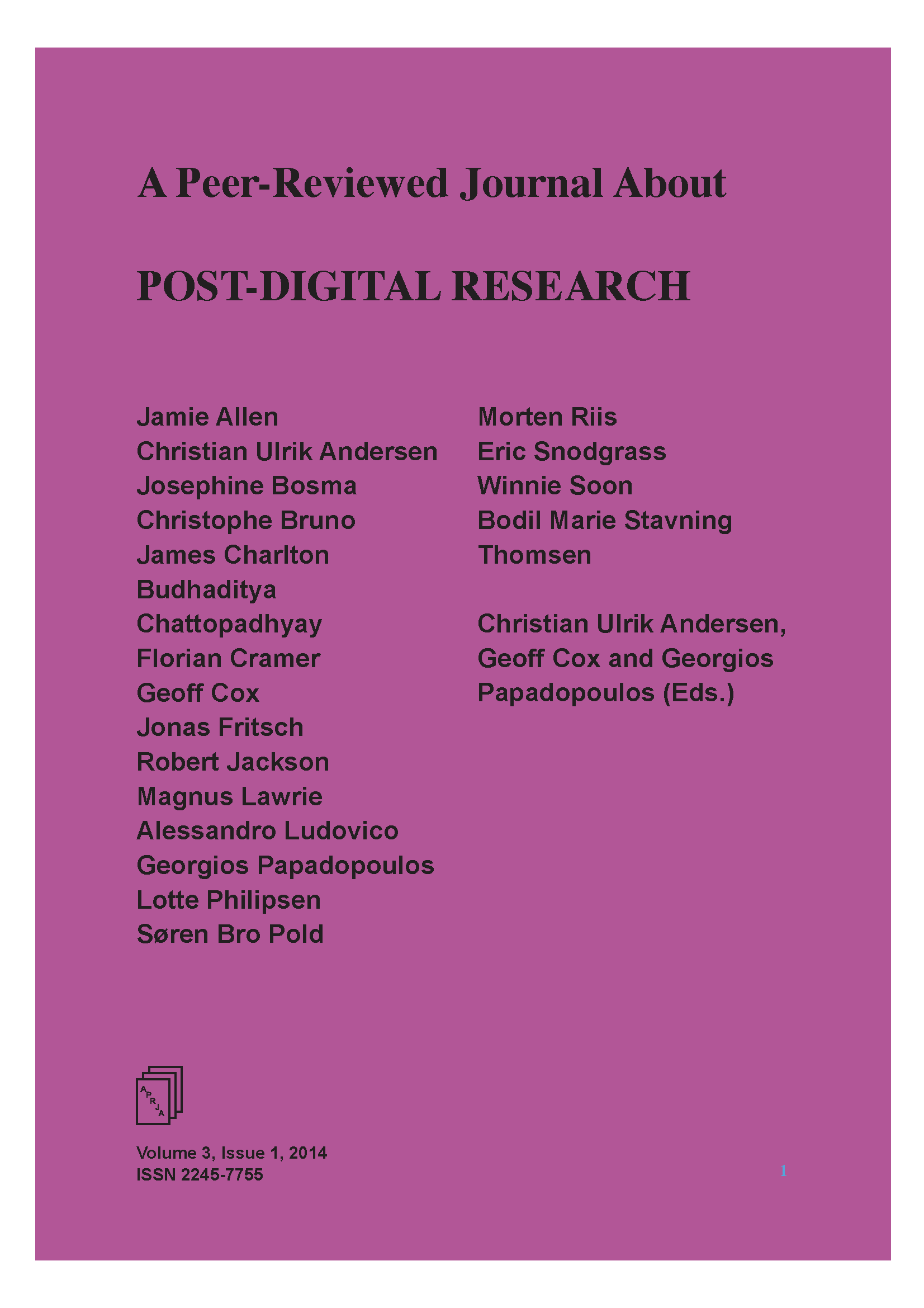Who’s Afraid of the Audience? Digital and Post-Digital Perspectives on Aesthetics
DOI:
https://doi.org/10.7146/aprja.v3i1.116092Abstract
This article analyses how works of art that make use of or refer to digital technology can be approached, analysed, and understood aesthetically from two different perspectives. One perspective, which I shall term a ‘digital’ perspective, mainly focuses on poetics (or production) and technology when approach- ing the works, whereas the other, which I shall term a ‘post-digital’ perspective, focuses on aesthetic experience (or reception) when approaching the works. What I tentatively and for the purpose of practical analysis term the ‘digital’ and the ‘post-digital’ perspectives do not designate two different sets of concrete works of art or artistic practice and neither do they describe different periods.[1] Instead, the two perspectives co-exit as different discursive positions that are concretely ex- pressed in the way we talk about aesthetics in relation to art that makes use of and/or refers to digital technology. In short: When I choose here to talk about a digital and a post-digital perspective, I talk about two fundamentally different ways of ascribing aes- thetic meaning to (the same) concrete works of art. By drawing on the ideas of especially Immanuel Kant and Dominic McIver Lopes, it is the overall purposes of this article to ana- lyse and compare how the two perspectives understand the concept of aesthetics and to discuss some of the implications following from these understandings. As it turns out, one of the most significant implications is the role of the audience.
Downloads
Published
Issue
Section
License
Copyright (c) 2014 A Peer-Reviewed Journal About

This work is licensed under a Creative Commons Attribution-NonCommercial-ShareAlike 4.0 International License.
Copyrights are held by the individual authors of articles.
Unless stated otherwise, all articles are published under the CC license: ‘Attribution-NonCommercial-ShareAlike’.
The journal is free of charge for readers.
APRJA does not charge authors for Article Processing Costs (APC)


